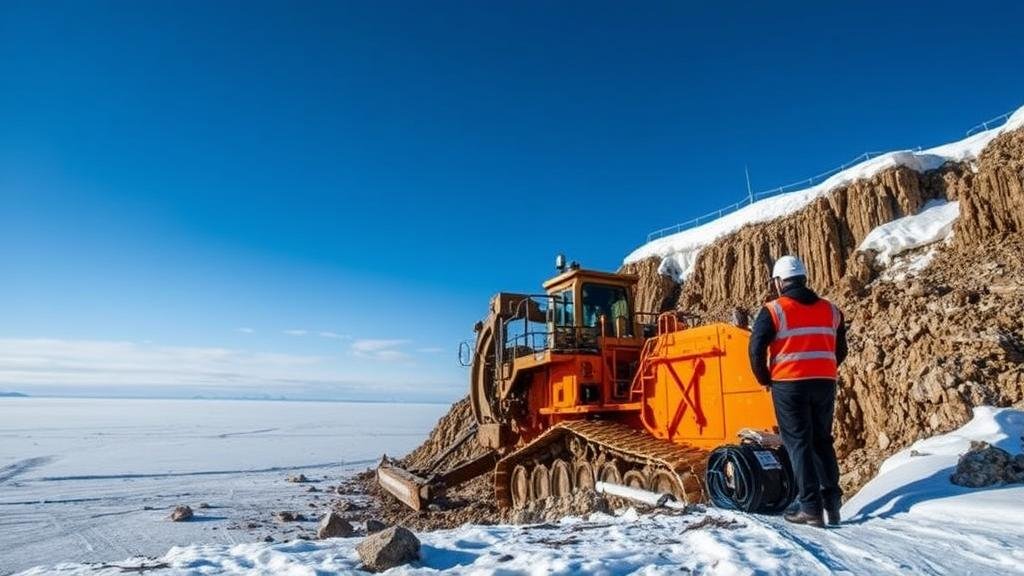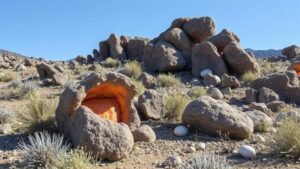Investigating the diamond-rich kimberlite pipes of Canada’s Arctic, untouched by major excavation efforts.
Investigating the Diamond-Rich Kimberlite Pipes of Canada’s Arctic
Canada’s Arctic is home to some of the world’s most enigmatic geological formations known as kimberlite pipes. These deep-rooted structures, formed from volcanic activity, are renowned for their association with diamond deposits. But, many of these kimberlite pipes remain untouched by significant excavation efforts, presenting a unique opportunity for rockhounds and mineral collectors.
Understanding Kimberlite Pipes
Kimberlite pipes are vertical structures formed by explosive volcanic activity, bringing materials from the Earths mantle to the surface. e pipes can reach depths of up to 1,000 meters and typically have a roughly cylindrical shape, varying in diameter from a few meters to over a kilometer.
Consisting primarily of a mix of volcanic rock, minerals, and diamonds, the composition of kimberlite creates a geological environment that can encapsulate economic and scientific possibilities. For example, in Canada, the Diavik and Ekati mines are two of the most recognized sources of diamonds, both situated in the Northwest Territories, underscoring the potential of these geological formations.
Geological Significance of Canada’s Arctic
Canada’s Arctic region is characterized by its rugged landscape and severe climate, conditions that often deter exploration and excavation. Despite the harsh environment, the geologic history of the area is rich, with data suggesting that several kimberlite pipes have yet to be thoroughly investigated. In fact, as of 2023, approximately 240 known kimberlite occurrences exist in the Canadian Arctic, with many remaining unmined.
- Kimberlite pipes are often found in geological formations such as Archean cratons, which are among the Earth’s oldest rock formations.
- Recent studies indicate that the diamond yield in certain unexploited kimberlite pipes could range from 0.5 to 1.0 carats per ton, categorizing them among potentially viable commercial sources.
Challenges of Exploration
The isolation and harsh weather conditions greatly hinder access to these remote locations. Seasonal ice cover, extreme temperatures, and rugged terrain pose significant obstacles to both academic researchers and amateur rockhounds. Plus, logistical difficulties in transporting equipment and personnel complicate excavation efforts.
But, technological advancements in remote sensing and geophysical exploration methods, including magnetic and electromagnetic surveys, are opening new pathways for investigation of these untouched kimberlite pipes. Such techniques can help identify promising regions for further exploration without extensive physical intrusion.
Rockhounding Opportunities
For rockhounds and mineral collectors intrigued by the prospect of uncovering diamonds or rare minerals, the Arctic’s unexcavated kimberlite pipes present an exciting prospect. While direct access may be challenging, there are ways to engage with this unique landscape:
- Participate in organized field trips led by mineral collecting associations or university geology departments.
- Explore other regions known for their glacial deposits, as these may contain secondary weathered diamonds transported from their primary sources.
- Stay informed about academic and commercial mining companies that may offer public digging days or volunteer research opportunities in kimberlite exploration.
Ethical Considerations
It is essential for collectors and enthusiasts to approach rockhounding in these regions with an ethical mindset. Given the pristine nature of Canada’s Arctic, it is crucial to respect local regulations, sensitive ecosystems, and Indigenous lands. Obtaining proper permissions and collaborating with local communities not only ensures legal compliance but also enriches the educational experience.
Conclusion: Taking Action
The allure of Canada’s diamond-rich kimberlite pipes holds significant potential for both scientific inquiry and mineral collecting. By understanding the geological context, challenges, and opportunities within this region, enthusiasts can engage responsibly with these untouched landscapes. Here are some actionable takeaways:
- Research geological maps and databases to identify potential sites of interest.
- Follow developments in remote exploration technologies and findings related to unexplored kimberlite pipes.
- Network with fellow rockhounds and professionals in the field to uncover collaborative opportunities in Arctic exploration.
The juxtaposition of untapped geological wonders and the spirit of exploration will undoubtedly continue to captivate rockhounds and mineral collectors for years to come.


